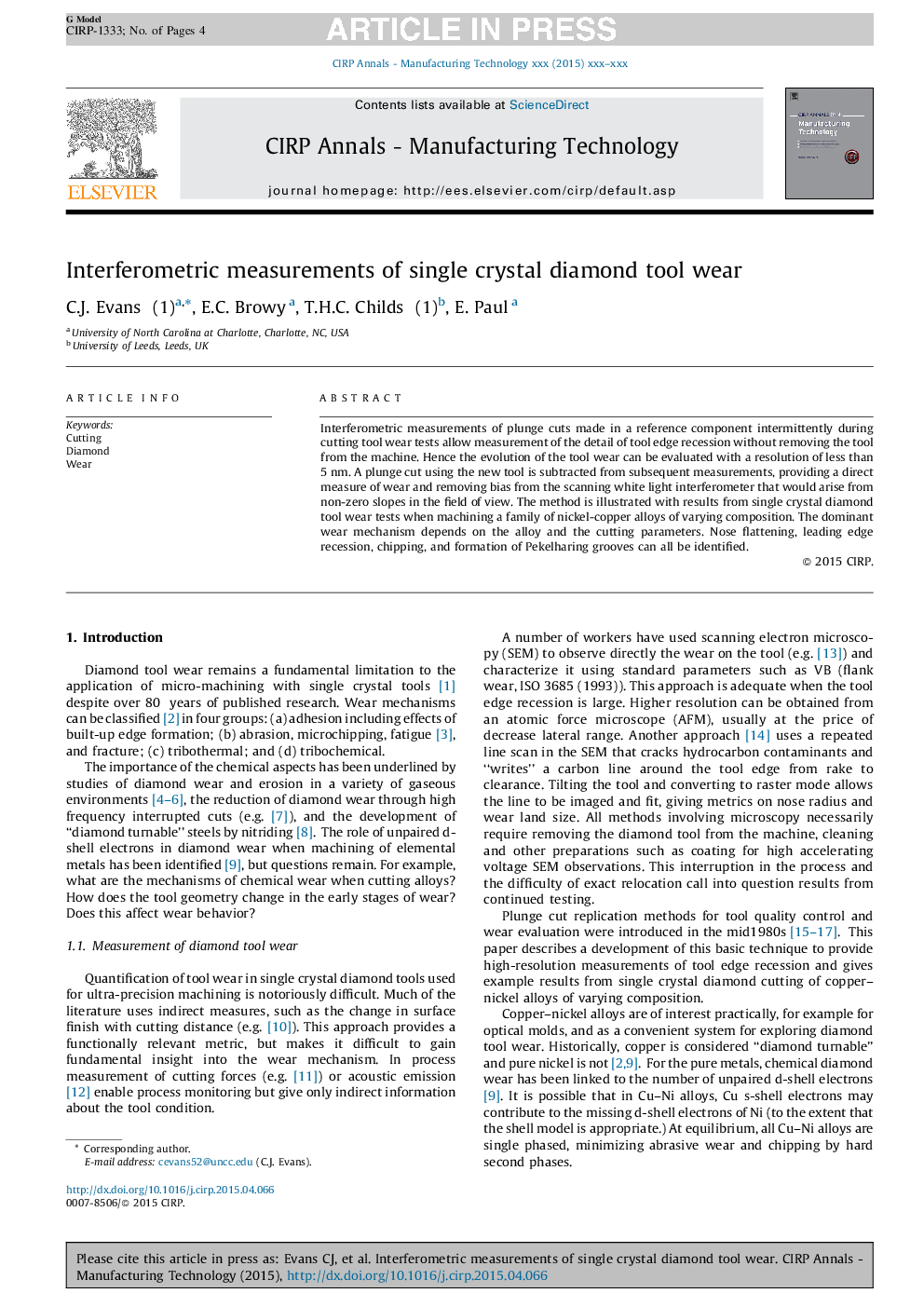| Article ID | Journal | Published Year | Pages | File Type |
|---|---|---|---|---|
| 10673339 | CIRP Annals - Manufacturing Technology | 2015 | 4 Pages |
Abstract
Interferometric measurements of plunge cuts made in a reference component intermittently during cutting tool wear tests allow measurement of the detail of tool edge recession without removing the tool from the machine. Hence the evolution of the tool wear can be evaluated with a resolution of less than 5Â nm. A plunge cut using the new tool is subtracted from subsequent measurements, providing a direct measure of wear and removing bias from the scanning white light interferometer that would arise from non-zero slopes in the field of view. The method is illustrated with results from single crystal diamond tool wear tests when machining a family of nickel-copper alloys of varying composition. The dominant wear mechanism depends on the alloy and the cutting parameters. Nose flattening, leading edge recession, chipping, and formation of Pekelharing grooves can all be identified.
Related Topics
Physical Sciences and Engineering
Engineering
Industrial and Manufacturing Engineering
Authors
C.J. Evans, E.C. Browy, T.H.C. Childs, E. Paul,
